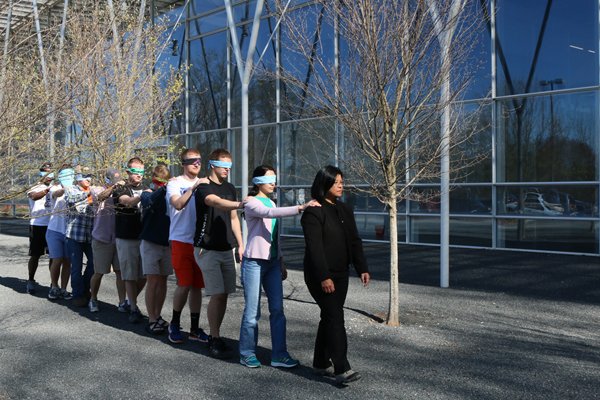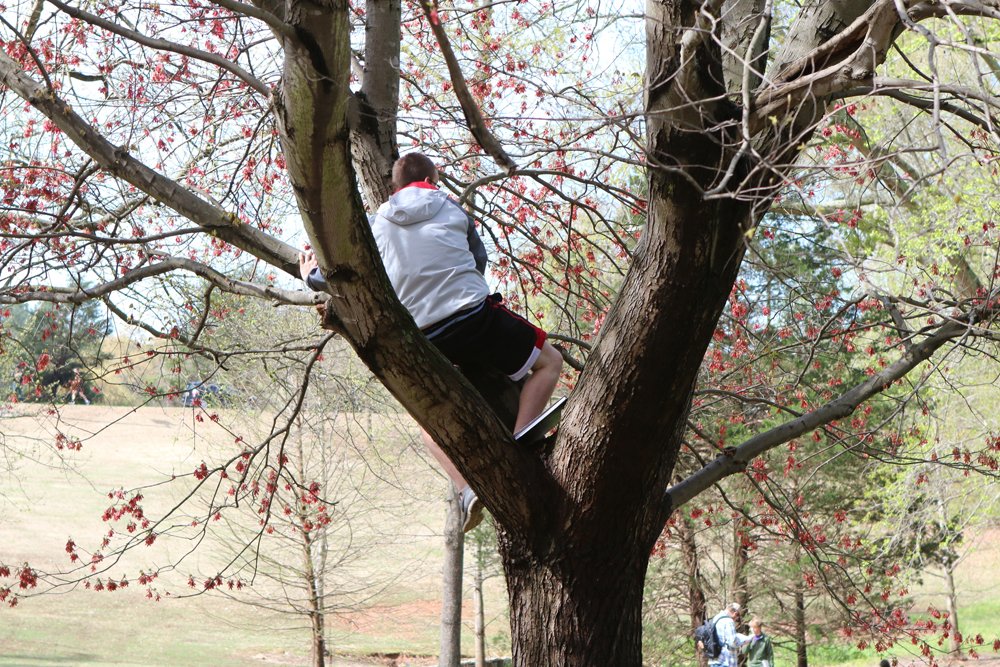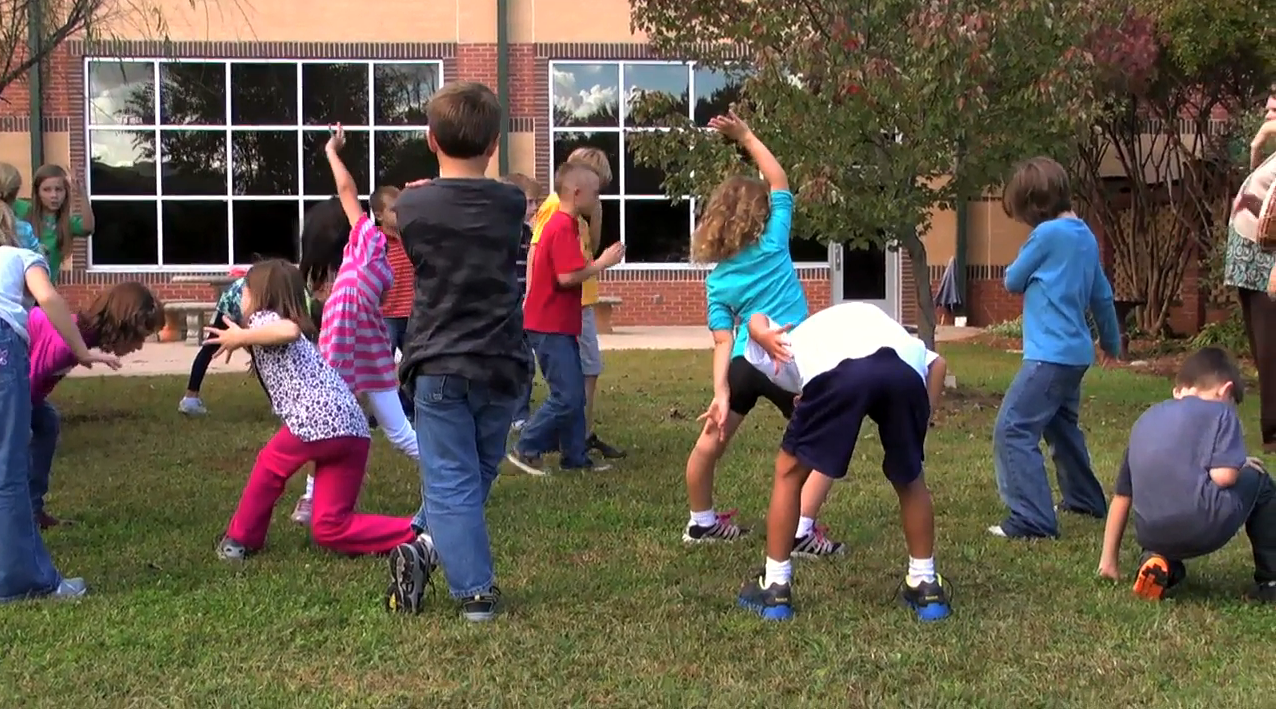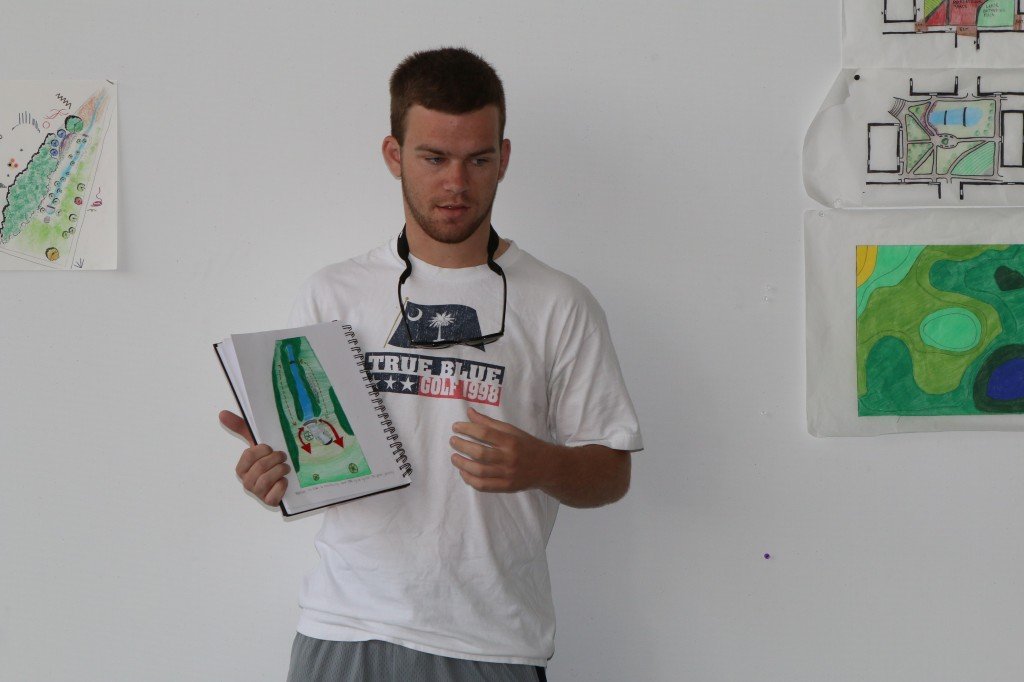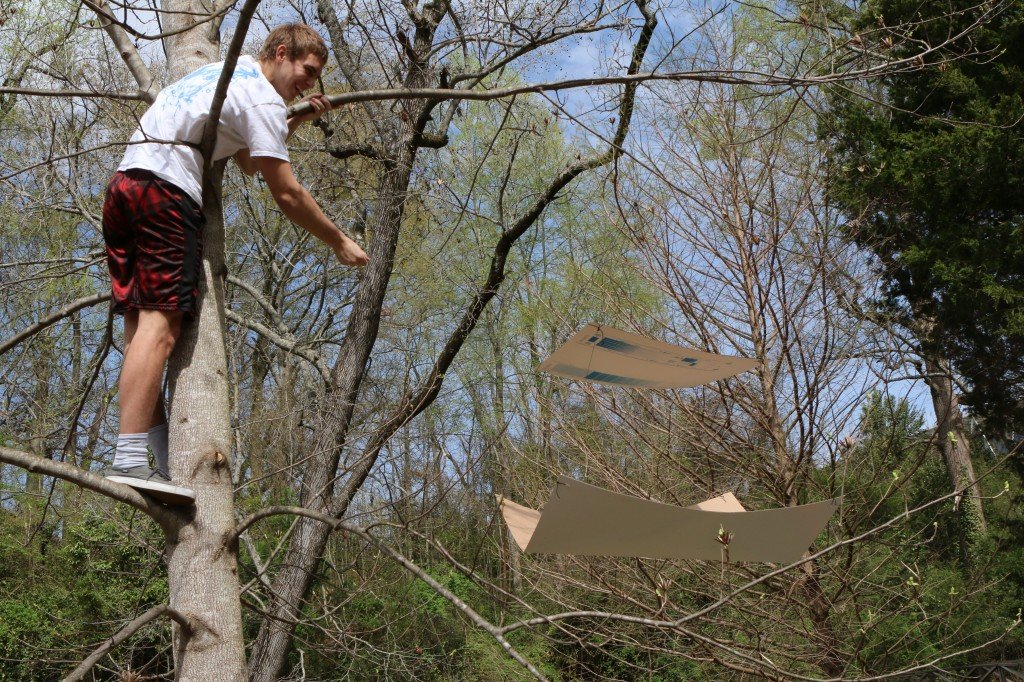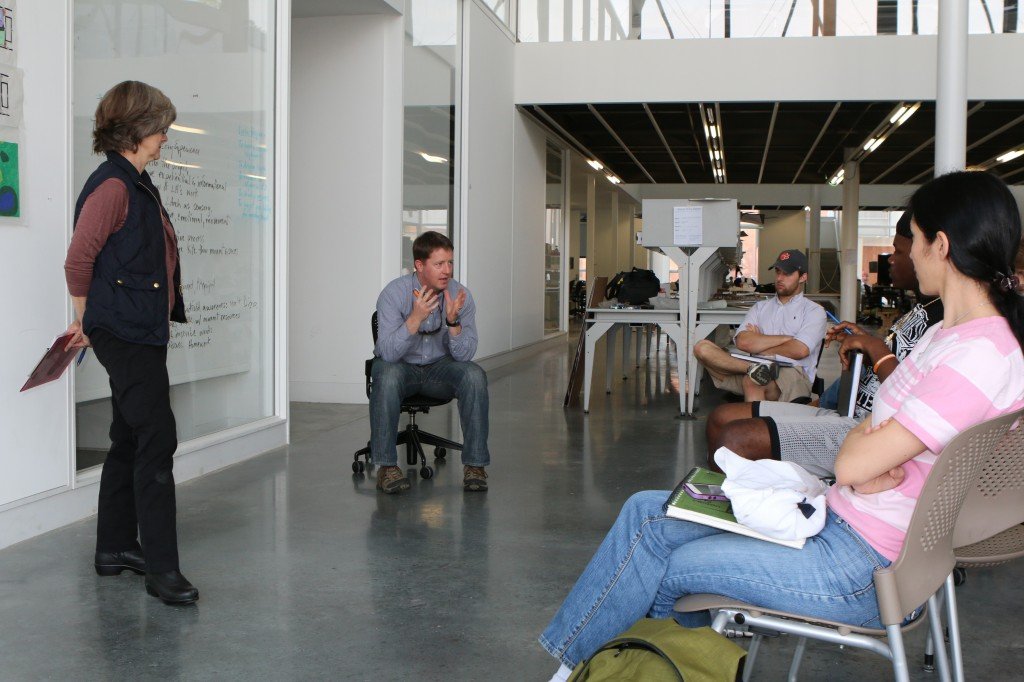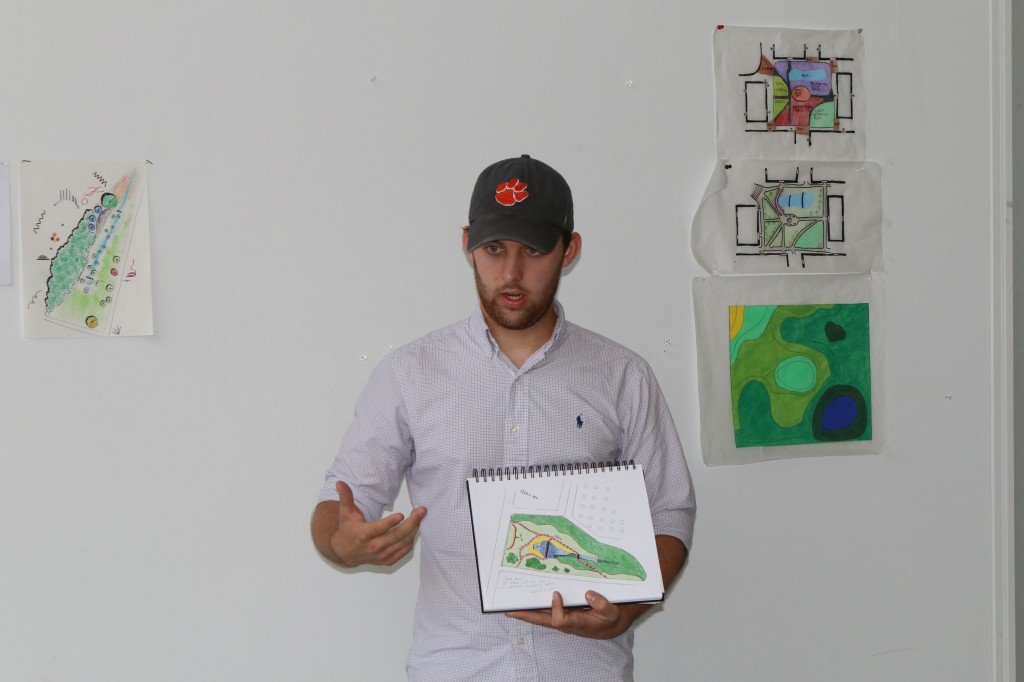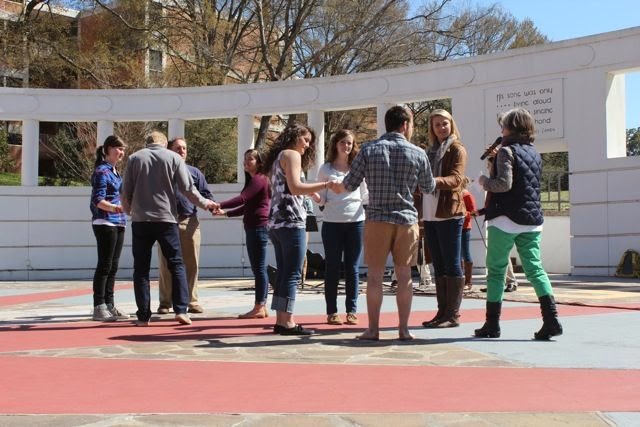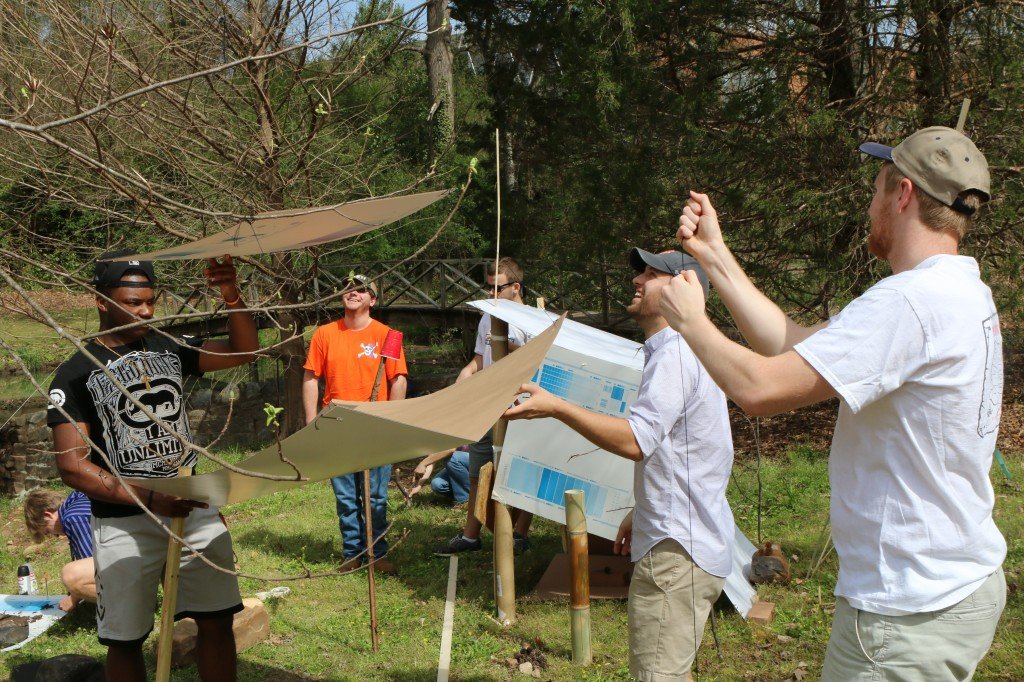EDUCATION
Using the Tamalpa Scoring process in the design of academic assignments situates kinesthetic, sensory experience alongside communication. It challenges the notion of “I think therefore I am.”
RECENT COURSEWORK AND SEMINARS
The Excitement and Potential of Landscape Architecture (residency at Clemson University, April 2014)
During Jennie’s residency in the Landscape Architecture studio of Professor Dan Ford, students used movement, poetics, drawing, and collective creativity to explore an approach to design based on sensory and movement resources. The workshop emphasized Lawrence Halprin’s vision of landscape architecture as the choreography of movement through space and the process of collective creativity.
A Qualitative Approach to Design: Designing a Japanese Tea House (residency at Clemson University, March 2015)
In the architecture studio of Professor Annemarie Jacques, the Tamalpa process introduced and heightened student awareness of the design site. Students activated the kinesthetic sense, emotions, and imagination as design resources and approached process as an activity with its own results and value. Students also embodied and symbolized the values of the tea ceremony in potential design concept and explored architecture as a scoring device for motion and activity.
Writing, Body, and Earth Seminar (seminar for Clemson Honors College, Fall 2021)
Students in the Clemson Honors College attended a seminar where they created writing grounded in place-based, sensory experience using Andrea Olsen’s book, Body and Earth as a foundational text. Additional resources used as influences were Robert Yagelski’s Writing as Being: Writing Instruction, Nonduallity, and the Crisis of Sustainability; William Cronon’s “The Trouble With Wilderness”; and Wendell Berry’s “In Distrust of Movements”.
The Role of Dance in Culture (Non-literature Humanities course at Clemson University, Fall 2020 - Fall 2021)
The goal of this course was to push our thinking beyond the artistic traditions and histories of the west and the global North. Students explored dance as communal glue as well as entertainment. Scored assignments were a way of understanding the role of embodied ritual across eras and cultures.
Composition and Rhetoric (General Education course required by many majors at Clemson, 2018 - 2022)
This course was based on composition as a way of being, as well as a way of communicating, and on the roots of rhetoric in classical Greece and a philosophical way of life. Using these disciplines, students inquired about Clemson, both the town and university, its geography, landmarks, people, history, ecology, controversies, and surrounding areas. Assignments were scores that explored intentions and final projects were performance of the score.
Elementary and Secondary School Residencies
Motion as an approach to learning — everyday, pedestrian movement in space — works with the sensory and kinesthetic abilities of students as a way into academic content. We can solve equations by plotting points on a human 3-D graph using people as points, or use the elements of movement to focus on action words in a story, or play with the qualities of magnetism by using the weight and force of bodies. We also use visual art, writing, voice, and performance techniques to contain the experience and suggest new directions. In this way, experience is the origin of innovative, authentic ideas and critical thinking.




